In 2017, Boise State geosciences assistant professor Brittany Brand and Ph.D student Nicholas Pollock led a team of students and volcanologists from across the globe to study Mount St. Helens, which in 1980 became the United States’ deadliest and most economically destructive active volcano.
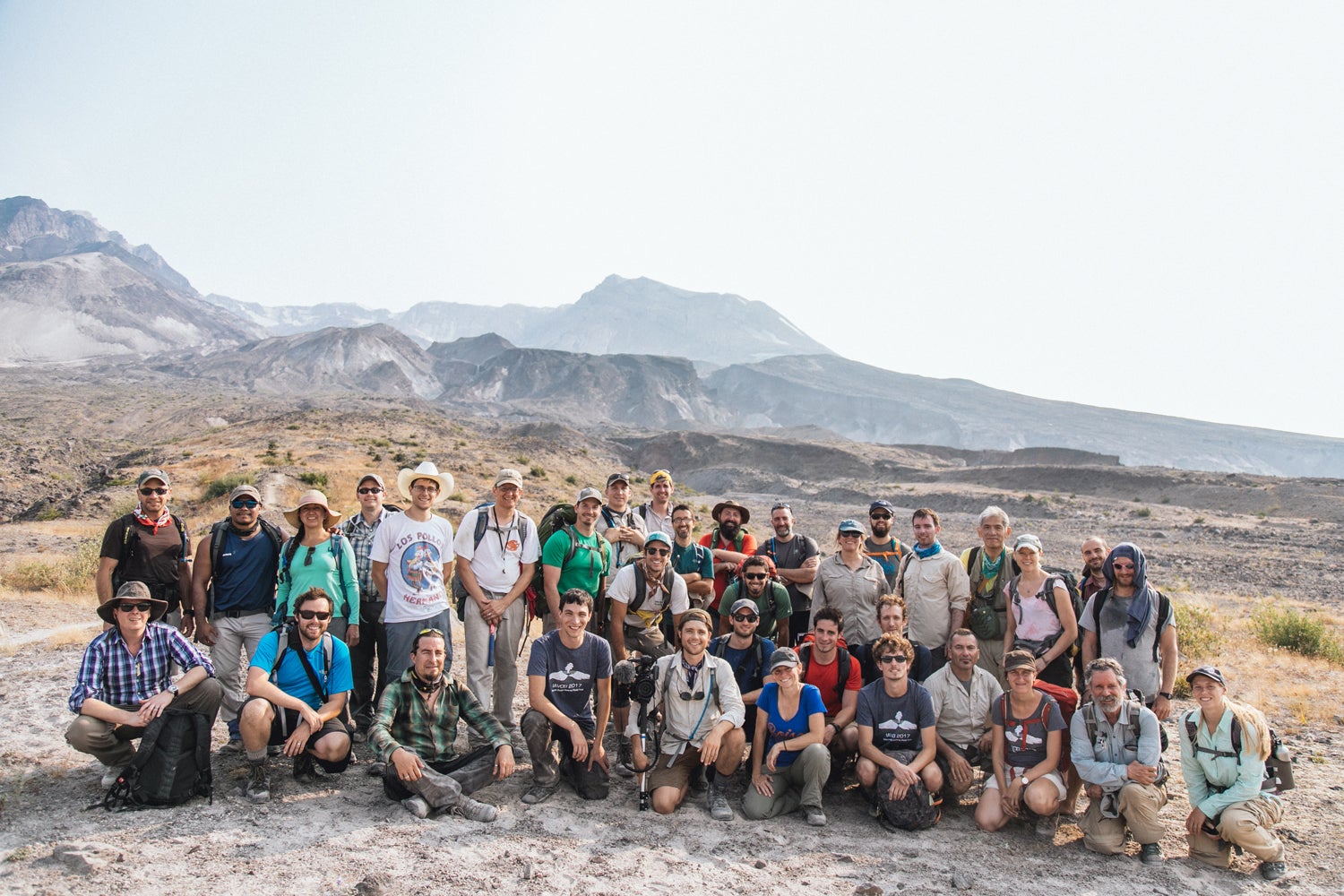
Mount St. Helens is one of the most (in)famous volcanoes in the world.
The eruption of Mount St. Helens on May 18, 1980, killed 57 people. It flattened around 200 square miles of forest, damaging roads, rivers and fields. It sent a plume of ash 30,000 feet into the air. Some of that ash traveled as far away as Oklahoma. The eruption at the site, just 50 miles northeast of Portland, Oregon, also created a kind of giant outdoor lab and sparked the beginning of modern volcanology, the scientific study of volcanoes. A group from Boise State ventured there to see what the volcano left behind.
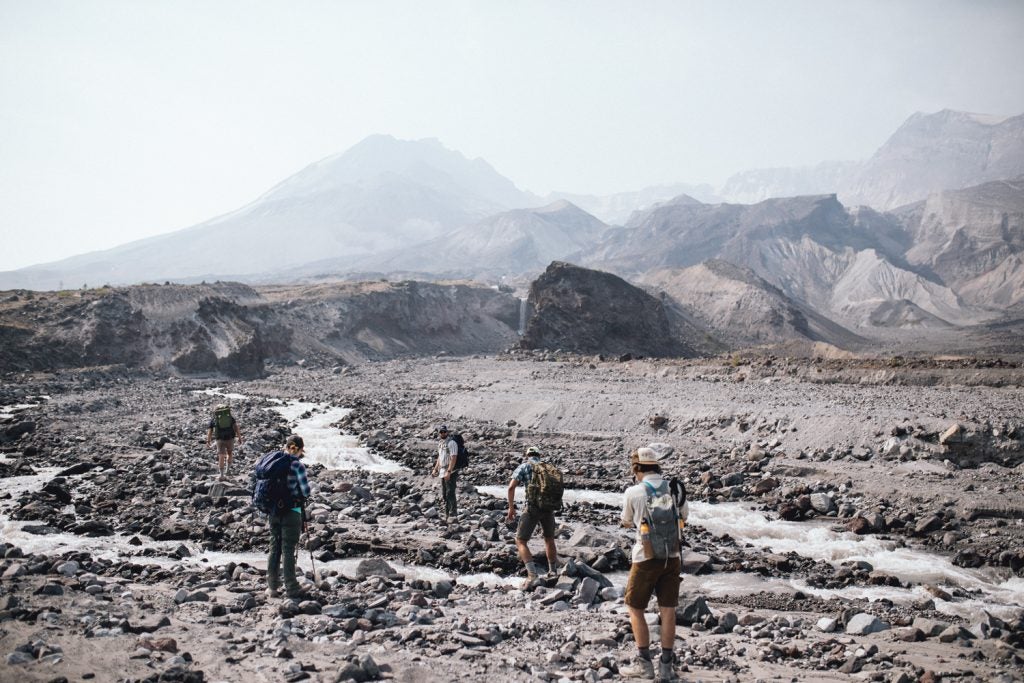
“Field trips like this are some of the places where we learn the most and where we can advance our science. Having the students there with their fresh, unbiased, clear minds … they always bring something that I haven’t thought of.”
– Brittany Brand, expedition leader
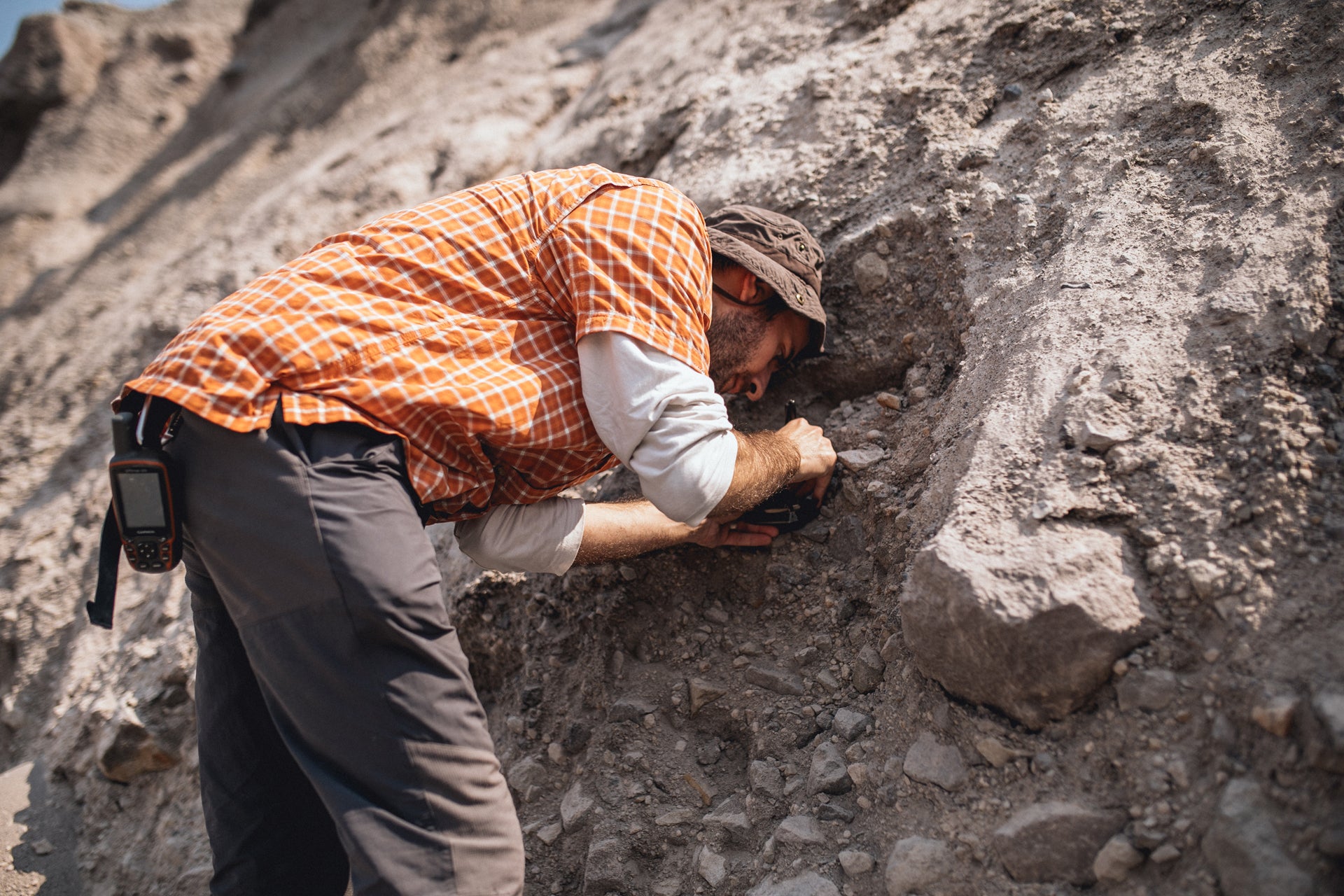
Erupting volcanoes spew “pyroclastic flows” – searing hot clouds of gas, ash and rock – across the landscape.
“The flows are too dangerous to observe in real time, so volcanologists rely on their deposits as a record of what happened,” said Brittany Brand, assistant professor of geosciences who led Boise State’s 2017 expedition.
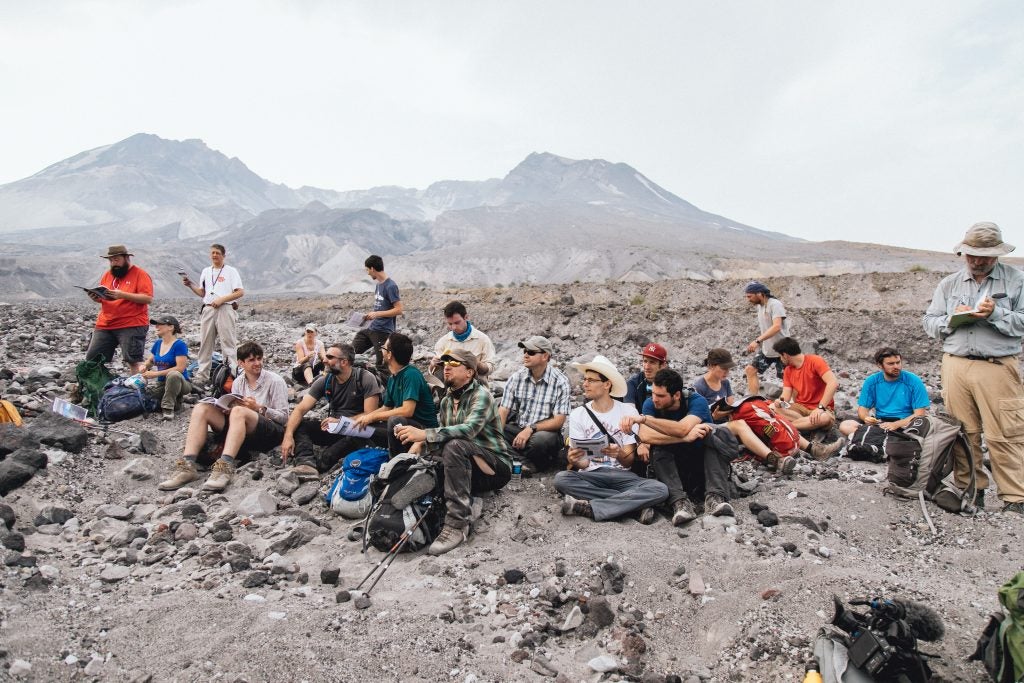
Some of the deposits on Mount St. Helens are 100 feet deep. Erosion over the course of three decades has worn canyons into those deposits, exposing thick walls of ash and rock for miles.
“We can study the size of the rocks in the pyroclastic flow deposits to understand something about the energy and hazard potential of such flows. What we learn at Mt St Helens can be applied to constrain the hazard potential of future pyroclastic flows at Mt St Helens, as well as for volcanoes around the world,” said Brand.
“It really is a destination that if you’re a volcanologist, you want to come to. It’s on the ‘volcanology bucket list.’”
– Boise State Ph.D. student Nick Pollock on the powerful allure of Mount St. Helens
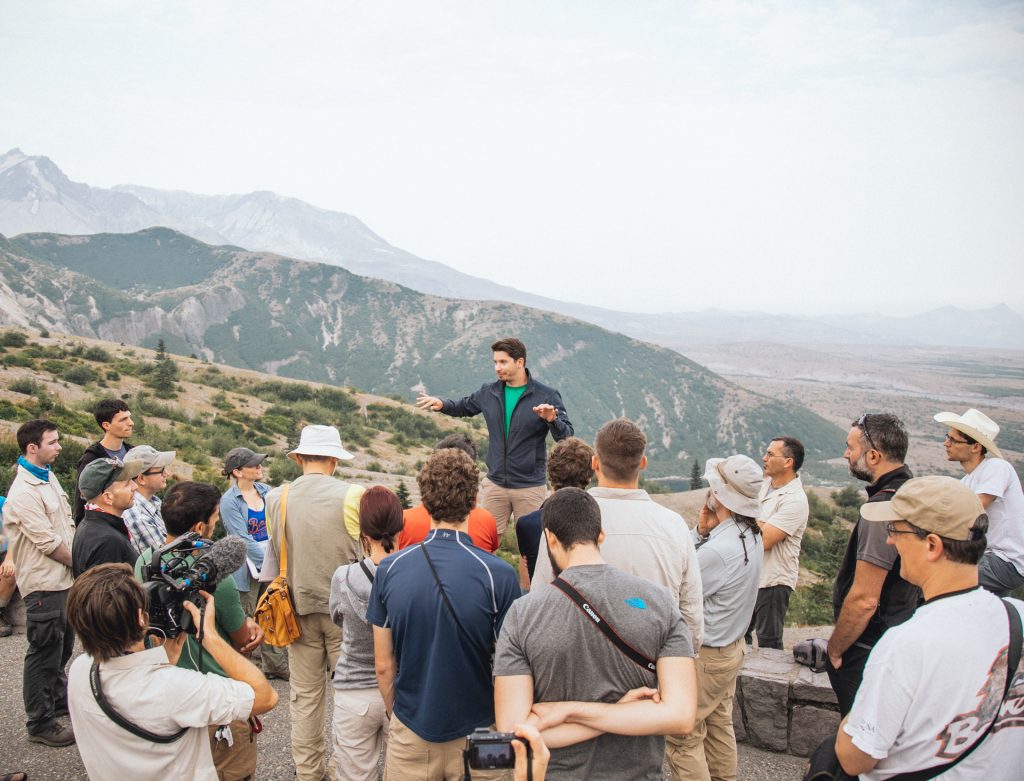
Mount St. Helens field days typically included 10 miles of hiking in rough, dusty, rugged conditions. Students and experts spent their days mapping the terrain and sampling deposits left by the 1980 eruption.
“This field trip has been everything I hoped it would be.” – Brittany Brand
Brittany Brand and Nick Pollock’s work at Mount St. Helens will help scientists better predict and mitigate the hazards associated with similar eruptions around the world.
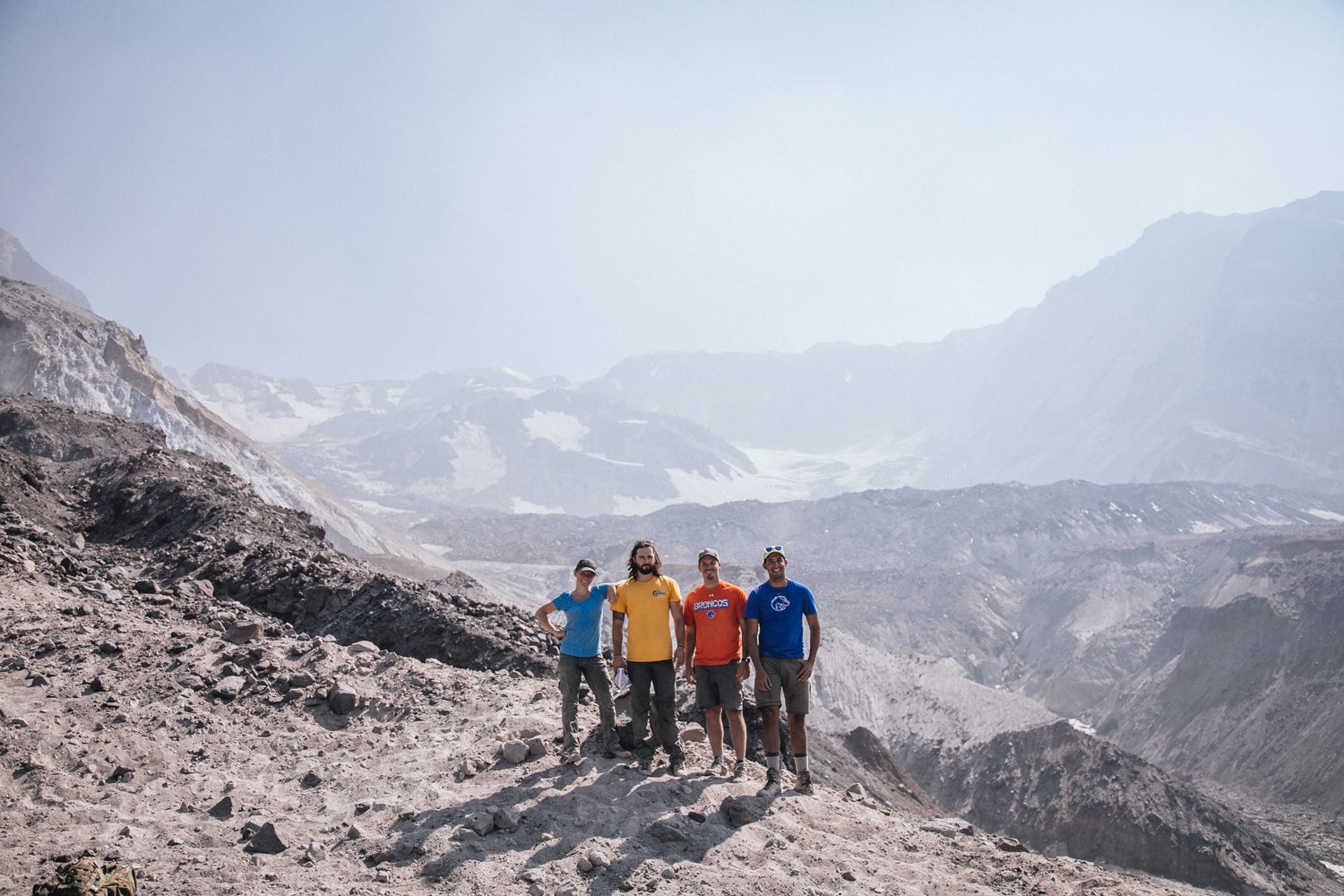
View full photo album on the Boise State University – Volcanic and Magmatic Studies’ Facebook page.
Videography by Zach Voss
